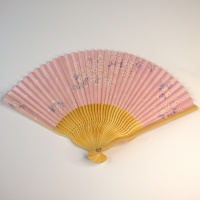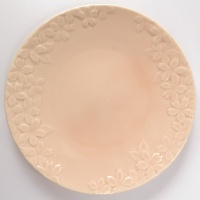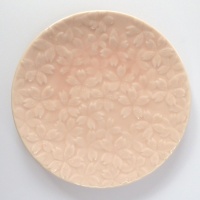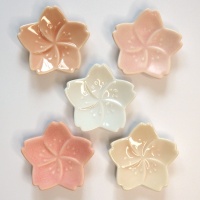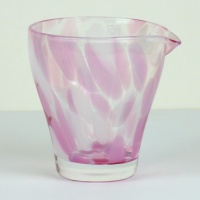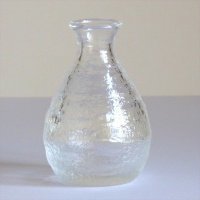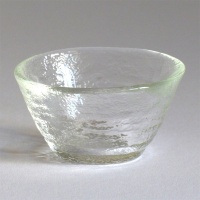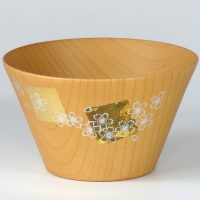Japan has cherry blossom records dating back over 1,200 years. Ancient records from Kyoto’s Imperial Court show detailed notes on when the sakura bloomed each year which shows how important this event has been throughout history to Japanese people.
Today, cherry blossom season is still a culturally significant time in Japanese society and one that is marked and celebrated across the country.
So let’s delve into the historical meaning of sakura season and how the celebrations have changed in modern times.
Ancient spirituality
In early Japan, cherry blossoms or sakura were believed to house spirits (kami) and the blooming season symbolized the presence of divine forces.
Farmers in the Heian period (794–1185) used cherry blossoms to predict the planting season. Because the blossoms signalled the arrival of warmer weather, the farmers knew it was time to start preparing rice fields.
This connection between spiritual life and the practical concerns of farming gave people a deep respect for the blossom.
During this period, the Heian aristocracy (especially the Imperial Court in Kyoto) romanticized cherry blossoms.

Poets and courtiers wrote waka poetry about their fleeting beauty, comparing them to the fragility of human life. Sakura became a central theme in Japanese aesthetics, tied to the idea of mono no aware, the awareness of impermanence and the fleeting nature of life.
By the Kamakura (1185–1333) and Edo (1603–1868) periods, the samurai class adopted cherry blossoms as a symbol of their way of life. The short-lived bloom mirrored the samurai ideal of an honourable life and sudden death. This symbolism was reinforced into the Meiji era (1868–1912) and beyond.
The birth of popular hanami
Hanami (花見) is the traditional Japanese custom of viewing and appreciating cherry blossoms (sakura) in full bloom. Families, friends and colleagues gather under the flowering trees to eat, drink and take in the wonderful sight.
Hanami is believed to have started during the Heian period, influenced by the Chinese custom of flower appreciation.
The practice was popular among the imperial court, where nobles would gather beneath the blossoming cherry trees to admire the fleeting beauty of the flowers. The famous Heian-era literary work The Tale of Genji (源氏物語) mentions cherry blossom viewing, showing how deeply it was embedded in court culture of the time.
During the Kamakura (1185–1333) and Muromachi (1336–1573) periods, the samurai class also adopted hanami custom. While they appreciated the beauty of the sakura, it also carried a deeper symbolism for them - the transient nature of life, aligning with the bushidō (samurai code). Feudal lords, or daimyō, would host hanami gatherings but it was still an elite custom.

During the Edo period however, the Tokugawa shogunate, the military rulers of Japan belonging to the Tokugawa clan, encouraged cherry tree planting in cities and public spaces and the city of Edo, now Tokyo, saw mass plantings along rivers and in parks.
This made hanami into a popular pastime that became widespread among the general population and transformed hanami into a festival-like event for all social classes, evolving into the lively celebrations we see today.
Indeed, Ueno Park and along the Sumida River in Edo became famous hanami spots and remain so even now.
Why do people still love sakura today?
Even now, the sight of delicate sakura evokes nostalgia, beauty and reminds us of the fragility of the natural world. It remains tied to both personal reflection and social gatherings and also to Japan’s national pride. Plus of course, who doesn’t love an excuse for a hanami picnic with sake and bento?
It’s amazing how Japan has preserved and adapted its sakura traditions over the centuries and hanami remains one of the most anticipated seasonal events in Japan. It has become famous even outside of Japan and attracts millions of tourists every year.
Modern celebrations
Sakura season is a time for socializing, relaxing and enjoying the beauty of the cherry blossoms. Here’s how people celebrate it today:
Hanami gatherings
Families, friends and work colleagues gather in famous hanami spots like Tokyo’s Ueno Park, Maruyama Park in Kyoto and Osaka Castle Park. They bring bento boxes, sake, beer and seasonal snacks like sakura mochi, sweet rice cake with cherry blossom leaves.

It’s common to see groups marking their picnic spots with blue plastic sheets early in the morning, or even the night before, to reserve the best locations. It’s such a significant time of year that many workplaces organize hanami parties for employees to bond outside the office.
Some locations, like Chidorigafuchi in Tokyo, allow people to row boats beneath sakura trees and in places like Mount Yoshino in Nara, visitors hike to see thousands of cherry trees covering the mountainside.
In the media, many TV weather reports will include the sakura zensen, cherry blossom forecast to help people plan their hanami trips.

Yozakura - night-time sakura viewing
At night, a magical atmosphere is created when cherry trees are illuminated with paper lanterns or LED lights in places like Hirosaki Park in Aomori or along the Meguro River in Tokyo.
Festivals & special events
Many cities hold sakura festivals, sakura matsuri, with food stalls, performances and traditional music.
Some of the biggest festivals are the Hirosaki Cherry Blossom Festival in Aomori and the Takato Castle Park Sakura Festival in Nagano.
Sakura-Themed Limited-Edition Goods
Every year in the spring, brands release sakura-themed food, drinks and merchandise. Sakura motifs and decorations adorn the streets, shops and restaurants and you can find cherry blossom designs on homeware, cosmetics, clothes and many other goods.
Convenience stores sell sakura-flavoured snacks, from KitKats to sweet rice cakes and Starbucks Japan is famous for its seasonal sakura lattes and frappuccinos.
Saying goodbye to the blossoms

When petals begin to fall, they create a "cherry blossom snowstorm" known as sakurafubuki.
At this time, many people take a final stroll under the trees as the pink petals flutter like confetti to the ground, marking the end of the season.
Although it’s a little sad to see the sakura fade, it’s still a beautiful sight to observe and the drifts of pale petals on the ground really do look like snow.
How has hanami changed?
The custom of cherry blossom viewing has changed significantly from when it started in the Heian period as you might expect. Here are some of the most notable differences that I came across.
Who Took Part?
In the Heian period, hanami was reserved for the aristocracy. Only nobles at the Imperial Court in Kyoto could enjoy the blossoms as a refined and artistic pursuit.
By the Edo period, samurai and commoners began to celebrate hanami, thanks to the shogunate planting cherry trees in public spaces.
When merchants and townspeople in old Edo started organizing picnics, hanami was transformed into a festival for everyone.

Nowadays, Hanami is accessible to everyone, from families and friends to companies and tourists. It’s a major social event, with work colleagues, university students and international visitors all able to join in.
Tourism has made hanami global, with people from around the world planning trips to Japan just for sakura season.
Where did it happen?
Early hanami took place at imperial gardens and temple grounds but by the Edo period and with the planting of thousands of cherry trees in urban areas, famous hanami spots like Ueno Park, Sumida River and Mount Yoshino had become popular. Thanks to this many more people were able to enjoy them.
Today, many of the historical spots remain popular but modern hanami also happens in city parks large and small, along rivers and even in urban office areas. New locations like the Meguro River in Tokyo have become Instagram-famous for their night-time sakura illuminations.
More recently, sakura tourism has expanded out of the cities, with visitors seeking less crowded, off-the-beaten-path spots in rural areas.
What did people do at hanami?
In the past, Heian nobles wrote waka poetry and played music under the blossoms. Hanami was a refined, artistic activity.
In the Edo period, while the Samurai admired the sakura for its symbolism of impermanence and warrior spirit, ordinary people treated hanami like a festival, with food stalls, sake and performances.
These days, hanami is a lively social event, often involving big picnics, BBQs and drinking under the trees.

Music and entertainment feature with people bringing karaoke machines and portable speakers to play music.
Photography and social media are also a huge part of modern hanami, with professional and amateur photographers keen to get the perfect picture and people sharing cherry blossom snapshots online.
*
What food was eaten at hanami?
The Heian aristocracy ate sweets like dango (rice dumplings) and drank sake during hanami. During the Edo-period, hanami became more festive, with street vendors selling yakitori, tempura and seasonal sweets.
Today, people take bento boxes, sushi, fried chicken and convenience store snacks to their hanami gatherings and modern hanami food often includes sakura-themed treats like sakura mochi, sakura flavoured sweets and desserts, and pink-coloured sakura flavoured drinks such as limited-edition sakura lattes from big chain coffee shops.

Some of the traditional seasonal treats can still be bought and enjoyed today:
- Sakura Yokan is a jelly-like sweet made from red bean paste and sakura.
- Sakura Dango are skewered rice dumplings with a subtle floral sakura flavour.
- Sakura Anpan is a soft bread roll filled with sakura-infused red bean paste.
And there are modern commercially available sakura flavoured sweets that you might also like to try, including:
- Sakura Pocky, limited-edition Pocky sticks coated in cherry blossom-flavored chocolate.
- Sakura Kit-Kats, a seasonal favourite with a light floral sweetness.
- Sakura Cheesecake is a creamy cheesecake with a subtle sakura essence.
Celebratory drinks too remain a big part of hanami. People drink beer, sake (of course) and specially made seasonal beverages under the blossoms, such as:
- Sakura Latte, a pink-hued, floral latte, often sold by convenience stores and heavily promoted by coffee shop chains.
- Sakura Tea, a delicate and slightly salty tea made by steeping pickled sakura blossoms in hot water.
- Sakura Sake, a floral-infused sake, perfect for hanami celebrations.
The Meaning of Hanami

Historically, hanami was always deeply spiritual and poetic. The connection to the world of Japanese kami and symbolism of the delicate flowers is deeply rooted in Japanese folklore and culture.
While the cultural symbolism remains, hanami is now more about celebration, socializing and seasonal enjoyment. Festivities and tourism have become more central in recent times but people still gather to appreciate the fleeting beauty of sakura and the symbolism it holds.
*
Hanami-themed homeware at Hatsukoi
*






